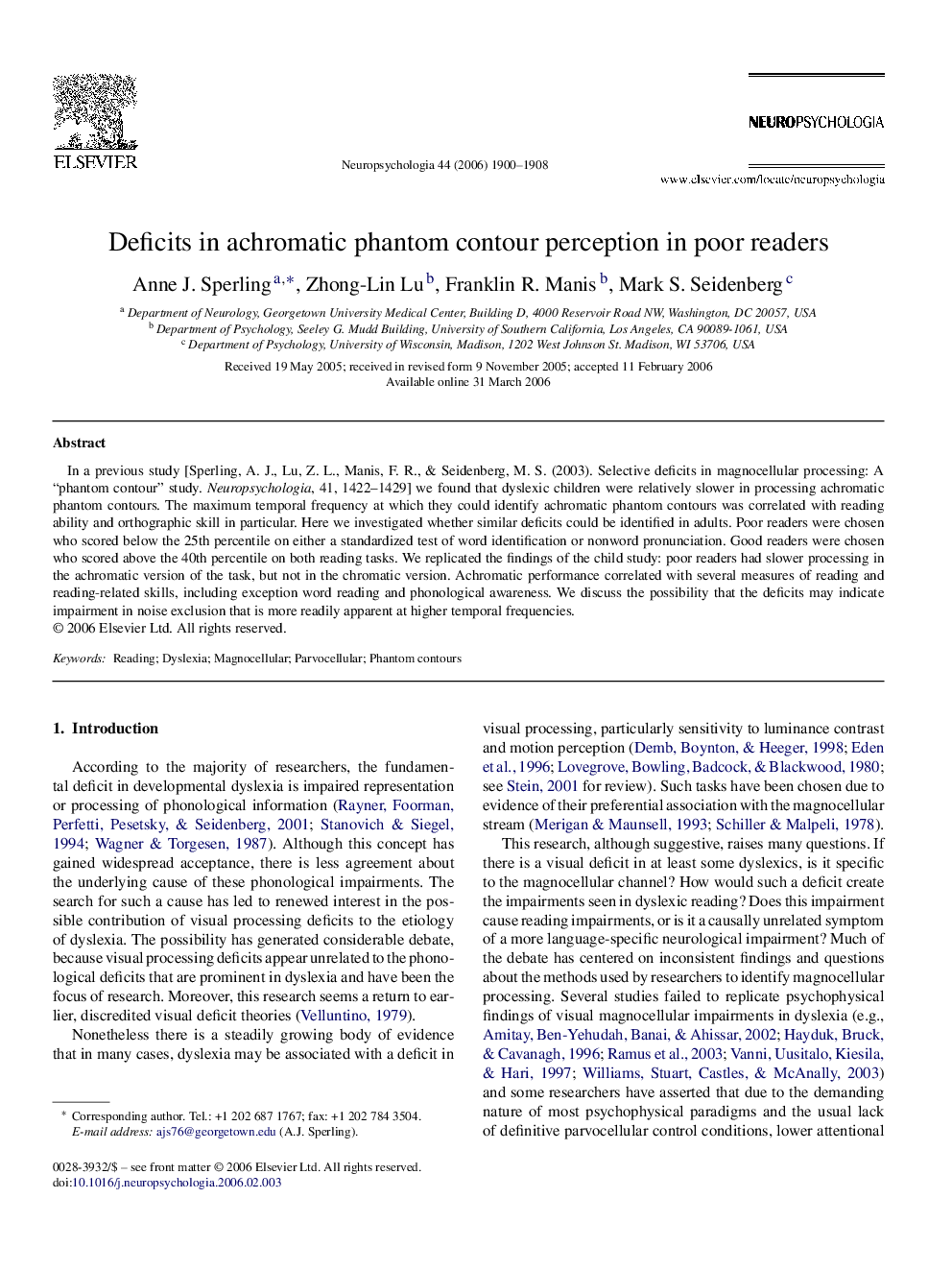| Article ID | Journal | Published Year | Pages | File Type |
|---|---|---|---|---|
| 945659 | Neuropsychologia | 2006 | 9 Pages |
In a previous study [Sperling, A. J., Lu, Z. L., Manis, F. R., & Seidenberg, M. S. (2003). Selective deficits in magnocellular processing: A “phantom contour” study. Neuropsychologia, 41, 1422–1429] we found that dyslexic children were relatively slower in processing achromatic phantom contours. The maximum temporal frequency at which they could identify achromatic phantom contours was correlated with reading ability and orthographic skill in particular. Here we investigated whether similar deficits could be identified in adults. Poor readers were chosen who scored below the 25th percentile on either a standardized test of word identification or nonword pronunciation. Good readers were chosen who scored above the 40th percentile on both reading tasks. We replicated the findings of the child study: poor readers had slower processing in the achromatic version of the task, but not in the chromatic version. Achromatic performance correlated with several measures of reading and reading-related skills, including exception word reading and phonological awareness. We discuss the possibility that the deficits may indicate impairment in noise exclusion that is more readily apparent at higher temporal frequencies.
